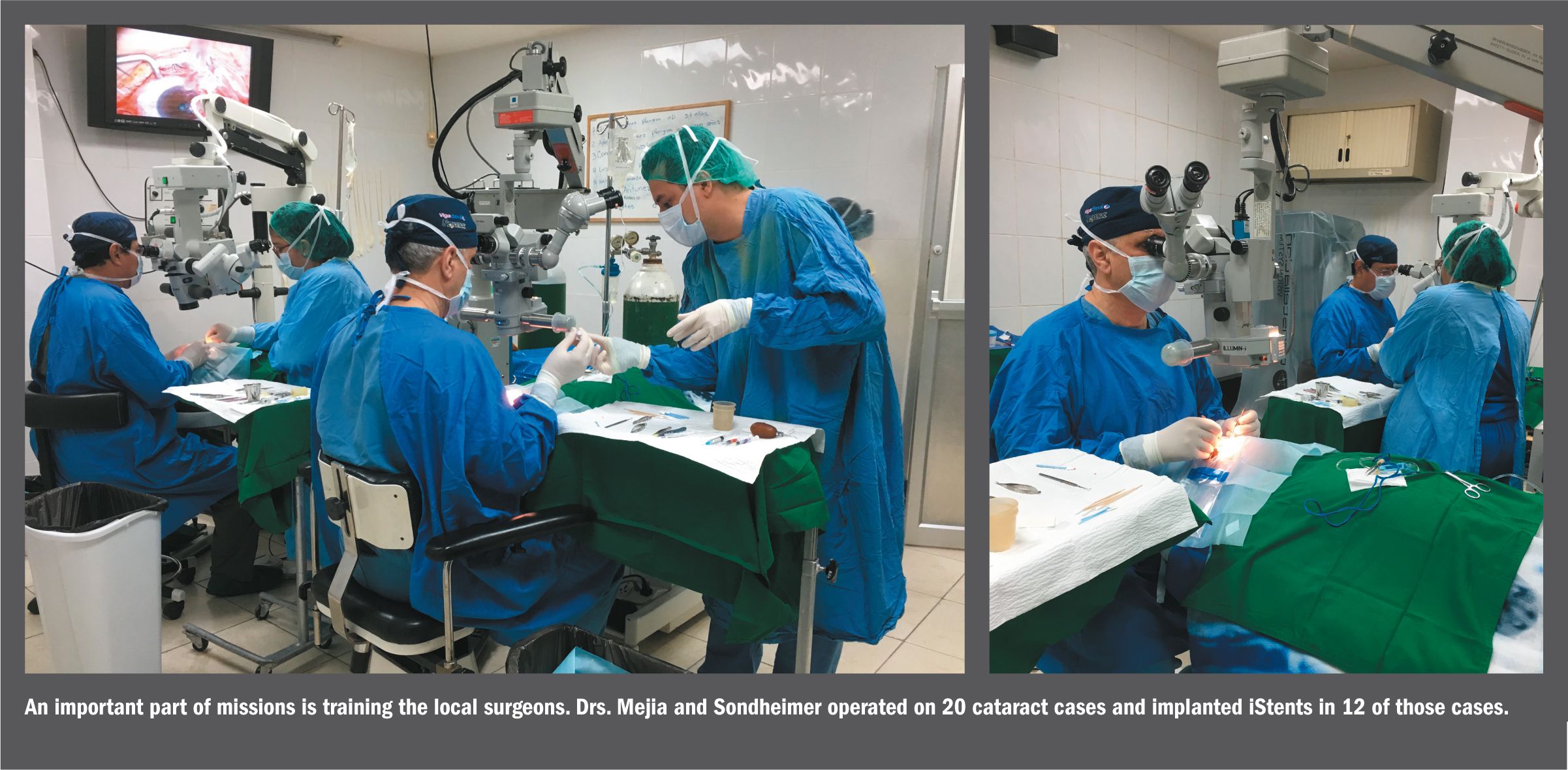Article
How MIGS benefits those with the greatest of needs
Author(s):

In parts of the world where people have limited access to ophthalmic care, MIGS and cataract procedures are able to provide long-term treatment when follow-up is unlikely.
According to a 2014 study by the American Academy of Ophthalmology (AAO), worldwide prevalence of glaucoma is expected to skyrocket, from 64.3 million in 2013, to 111.8 million by 2040.1 Whether due to lack of diagnosis or limited treatment, patients in the developing world will disproportionately suffer from preventable blindness due to glaucoma.1,2
Fortunately, new technology in combination with charitable missions has the chance to make a real difference for the future of glaucoma patients around the globe. There are many challenges to treating glaucoma in developing countries, particularly in the rural areas. Frequently, patients have never had an eye examination, and are even less likely to have ever seen an ophthalmologist.3
In the United States, those prescribed ocular hypotensive medications have dismal adherence rates.4 We can expect that to be the case in developing countries as well, particularly because adherence is closely tied to health literacy, and rural populations generally have little understanding of a chronic disease with no immediate manifestations.5
Transformative power of MIGS
The same technology that is transforming glaucoma care in the developed world has the potential to make a major impact in these disadvantaged populations. One of the greatest benefits of microinvasive glaucoma surgeries (MIGS) is that they are designed to provide continuous, sustained lowering of pressure, and can help reduce the burden of topical medications. They also have high-safety profiles, and are ideal in areas where medical follow-up is unlikely.
Because MIGS devices are coupled with cataract surgery, they are an ideal complement to the work done by SEE International. The non-profit organization uses volunteer ophthalmologists to provide medical services to disadvantaged individuals worldwide, focusing on cataract surgery.
SEE deploys small surgical teams of volunteer ophthalmologists to local host clinic sites that are in desperate need of help. Since they started in 1974, SEE volunteers have performed 4 million vision screenings and 500,000 ophthalmic surgeries in more than 80 countries.
SEE also fosters a network of corporate donors who provide most of the supplies. Glaukos Corp. recently donated 575 trabecular micro-bypass stents (iStents) to SEE, in addition to gonioprisms, supporting individual surgical programs, and coordinating physician training.
This past August, I had the privilege of participating in a mission to Honduras, and worked with Diego Mejia, MD, who heads the local clinic. Dr. Mejia and I operated on 20 cataract cases and implanted iStents in 12 of those cases.
An important part of missions is always to train the local surgeons. Learning to implant an iStent requires manual dexterity, as well as good optics. A microscope with adequate illumination goes a long way in making implantation simple, and is sometimes difficult to come by in developing countries.
Dr. Mejia also found the iStent useful, saying, “They worked amazingly.”
However, he cautioned, “they have a learning curve. You need an experienced instructor to teach you, and a steady pair of hands. It took me around five operations before I felt comfortable implanting the stent without help.”
Customizing the stent
In the United States, FDA guidelines dictate that a single iStent can be implanted in conjunction with cataract surgery. However, in Honduras and other countries we have more liberty to use the iStents as we see best for the patient. Studies show that implanting two iStents in conjunction with phacoemulsification increases efficacy.
A study by Ahmed and colleagues shows that two iStents plus phaco reduced unmedicated IOP more than 7 mm Hg.6 Another study by Belovay, Ahmed, and others shows the use of two or three microbypass stents with concurrent cataract surgery can achieve IOP less than 15 mm Hg.7
The majority of the patients served in these surgical trips have no access to ophthalmic care otherwise. MIGS devices are well-suited in these settings as they are minimally invasive treatments with good long-term safety and no reliance on medications.
It is comforting to know that we are restoring their vision with cataract surgery while also preventing glaucoma from having a negative impact.
Disclosures:
Stuart Sondheimer, MDP: 847/677-2794
Dr. Sondheimer is a board-certified ophthalmologist in Skokie, IL. He specializes in LASIK and cataract surgery. Dr. Sondheimer has volunteered with SEE International since 2008, traveling to volunteer humanitarian clinics in Vietnam, El Salvador, Honduras, and Panama. Dr. Sondheimer did not indicate any relevant financial disclosures.
References:
1. Tham et al. Global prevalence of glaucoma and projections of glaucoma burden through 2040: a systematic review and meta-analysis. Ophthalmology. 2014;121:2081–2090.
2. Robin A, Grover DS. Compliance and adherence in glaucoma management. Indian J Ophthalmol. 2011; 59(Suppl1):S93–S96.
3. Thulasiraj RD, Nirmalan PK, Ramakrishnan R, et al. Blindness and vision impairment in a rural south Indian population: the Aravind Comprehensive Eye Survey. Ophthalmology. 2003;110:1491–1498.
4. Nordstrom BL, Friedman DS, Mozaffari E, Quigley HA, Walker AM, “Persistence and adherence with topical glaucoma therapy,” Am J Ophthalmol. 2005;140: 598-606.
5. Muir KW, Santiago-Turla C, Stinnett SS, et al. Health literacy and adherence to glaucoma therapy. Am J Ophthalmol. 2006;142:223–226.
6. Ahmed IIK, Katz LJ, Chang DF, et al. Prospective evaluation of microinvasive glaucoma surgery with trabecular microbypass stents and prostaglandin in open-angle glaucoma. J Cataract Refract Surg. 2014;40:1295–1300.
7. Belovay GW, Naqi A, Chan BJ, et al. Using multiple trabecular micro-bypass stents in cataract patients to treat open-angle glaucoma. J Cataract Refract Surg. 2012;38:1911–1917.




